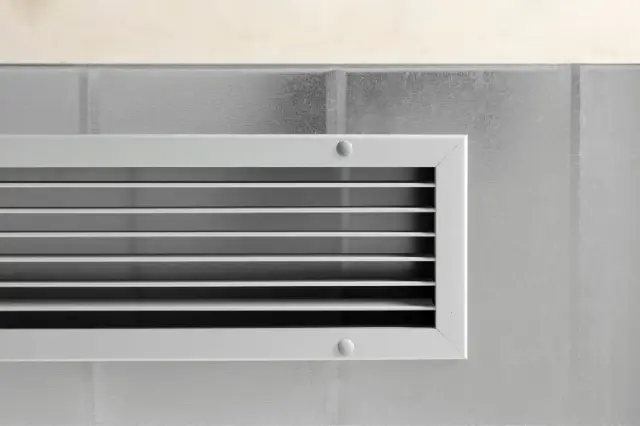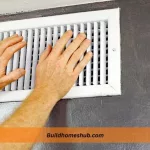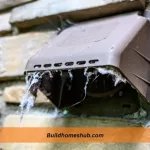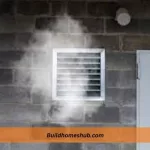When setting up a heating system in a home or office, a common question arises: should wall vents point up or down to optimize heat distribution? The answer to this question is crucial for ensuring that the space is heated efficiently and comfortably. This decision is influenced by factors such as the vents’ location, the room’s design, and the type of heating system used.
While the general guidance is straightforward, individual circumstances and preferences can lead to different choices. Understanding these factors can help homeowners and facility managers make the right decision for their specific situation.
Should Wall Vents Point Up or Down for Heat
For optimal heating, wall vents should generally point down when near the ceiling, directing warm air that rises back into the room. Vents near the floor are better oriented upwards to distribute heat evenly as warm air ascends. The best direction can vary based on room layout and personal preference, particularly to address colder areas.
It’s also important to consider the manufacturer’s recommendations for specific heating systems. Ultimately, the effectiveness of vent orientation depends on factors like room insulation, heating system size, and overall airflow, so experimentation might be necessary for the best results.
General Guidelines For Where Wall Vents Should Face for Heating
1. Wall Vents Near the Ceiling: Pointing Downwards
When wall vents are situated near the ceiling, it’s generally recommended to direct them downwards. The reason behind this is rooted in the basic principle of thermodynamics: warm air rises. In a heated room, the warm air generated by the heating system naturally moves upwards towards the ceiling. If left unchecked, this can lead to a significant temperature disparity, with warmer air at the top and cooler air at the bottom.
By angling the vents downwards, the warm air is pushed back into the living space, promoting a more uniform heat distribution. This enhances comfort and contributes to energy efficiency, as the heating system doesn’t have to work as hard to maintain a consistent temperature throughout the room.
2. Wall Vents Near the Floor: Pointing Upwards
Conversely, orienting them upwards is usually more effective when vents are located closer to the floor. This approach works in tandem with the natural behavior of warm air rising. By pointing the vents upwards, the warm air is directed into and throughout the room more evenly, reducing the occurrence of cold spots.
This method is particularly beneficial in rooms with high ceilings or spaces where furniture arrangements might block air flow.
3. Personal Preference and Room Layout
The ideal direction for vent orientation can also depend on personal preference and a room’s specific layout. For instance, in a room with uneven heating or certain areas that tend to stay colder, adjusting the vents to direct warm air towards these colder zones can significantly improve overall comfort.
This approach requires a bit of experimentation and observation, as every room has its unique characteristics in terms of size, layout, and even furniture placement, all of which can affect air circulation and heating efficiency.
4. Consult the Manufacturer’s Guidelines
It’s important to note that these general guidelines might not apply universally to all heating systems. Different heating systems have their own design specifications and operational guidelines.
Therefore, it’s essential to consult the manufacturer’s guidelines for your specific heating system. The manufacturer can provide tailored advice based on the system’s design and intended operation, ensuring that you achieve optimal performance and efficiency.
Why Vents Should Point Down for Heat
1. Convection
Warm air naturally rises, and cold air sinks. Having the wall vents point downward allows the warm air to exit at the top of the vent, creating a convection current. This helps distribute the heat more evenly throughout the room as the warm air rises and displaces cooler air, creating a continuous circulation of heated air.
2. Avoiding Drafts
Pointing wall vents upward can create drafts that make the room less comfortable. When warm air is blown directly upward, it can create a localized column of warm air near the ceiling, leaving the lower part of the room cooler. This can result in discomfort and inefficient heating.
3. Efficiency
Pointing wall vents downward ensures that the warm air is released into the living space where it is needed most. This can help your heating system work more efficiently and maintain a more consistent temperature in the room.
4. Safety
When wall vents point down, there is less chance of dust and debris being blown upward into the room. Also, if there are any flammable materials or objects near the vent, pointing it downward can reduce the risk of heat-related accidents.
Conclusion
The direction in which wall vents should point for optimal heating efficiency is not a one-size-fits-all solution. It varies based on the vent’s location – downward for ceiling vents and upward for floor vents – and can be further tailored based on personal preferences and room layout. Observing the heating patterns in a room and adjusting accordingly is essential. Additionally, consulting the manufacturer’s guidelines for your specific heating system is always recommended for the best results.
I like to think I can help you with all the information you need on home renovations and DIY tips. You should subscribe.











